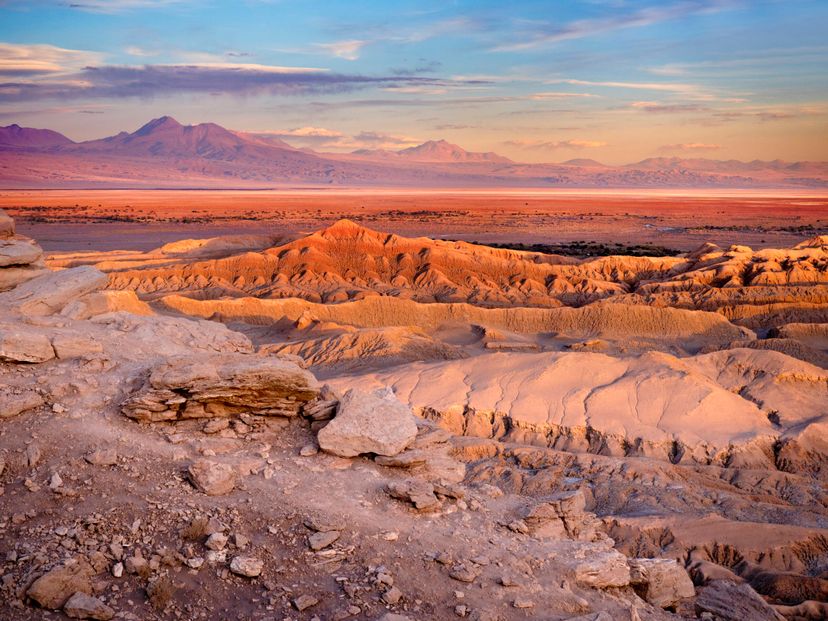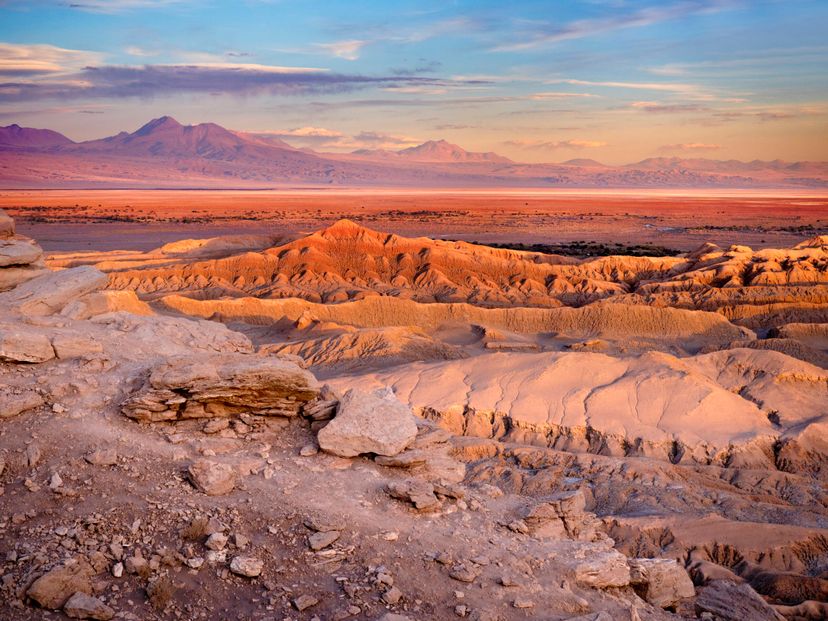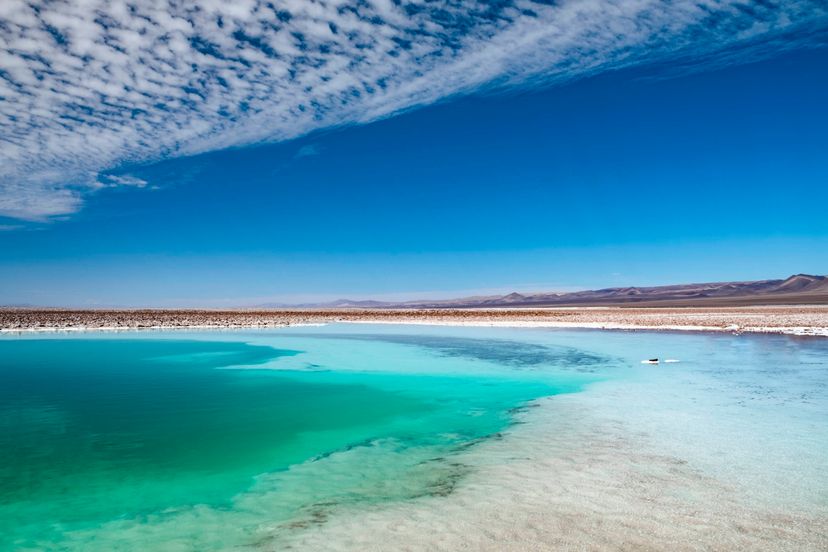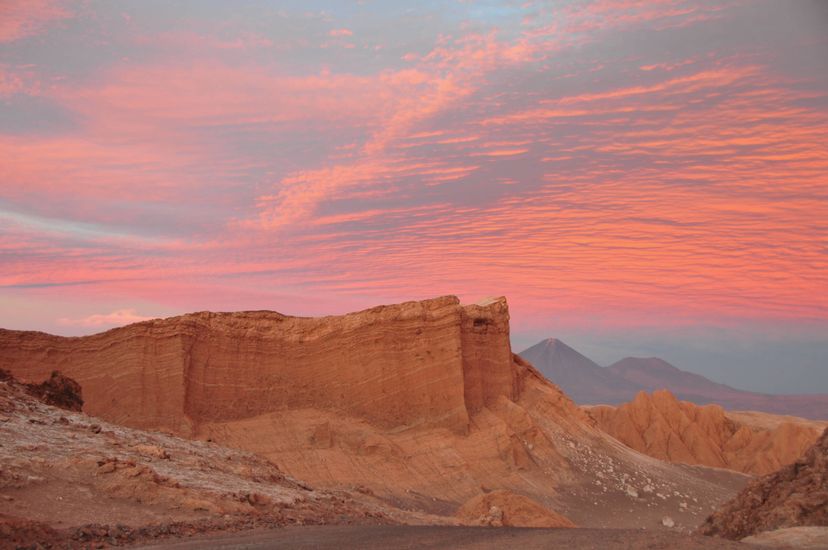
It is still dark when the Colque family makes its way up the volcano, climbing steadily in the early morning hours. The air is cool and arid here in the Atacama, the world’s highest and driest desert in the far northern reaches of Chile, along the Andes mountain range at the borders of Bolivia and Argentina.
The small group of indigenous Atacameños reaches the peak just before sunrise on this winter solstice, June 21 – the New Year for the Atacameño people. The eldest male, the grandfather, leads the animal they have brought along to the edge of the volcanic crest. Perhaps it is a llama, perhaps a sheep or a goat. All have been used in previous years.
Advertisement
As the sun begins its climb over the horizon the elder pulls out a knife and, with great respect and reverence, cuts open the animal’s chest. He reaches inside and pulls out the still-beating heart.
He holds the heart up toward the rising sun, an offering to the gods and to the power of nature in this harsh, forbidding land where very little grows and some places have never seen a drop of rain in recorded history. The entire family watches intently, in silence, for however many times the heart continues to beat will reveal how much prosperity and good fortune the family will have in the coming year.
After the ceremony, which has been a part of many Atacameño for thousands of years, the Colque family returns to the valley and goes to church – a Spanish Catholic church in the village of Machuca, where they live.
“It is very, very important to do this,” says Joel Colque, one of the younger adult members of the family at 24 years old. “With it we receive blessings, and a good year.”
This blending of cultures and beliefs may seem incongruous, until you realize that this desert region at the northern tip of Chile is home to an incredibly hardy people with a long lineage in human history. Some mummified remains in Father Le Paige’s Museum at San Pedro de Atacama are the oldest in the world, pre-dating Egyptian relics by thousands of years.
The Atacameño people were invaded by the Inca, colonized and relentlessly persecuted by the Spanish, and at times under the control of Bolivia and Peru. Their religion, culture and language have been under attack for centuries, yet somehow they have preserved a way of life that is little changed, and very welcoming to visitors.
“My people have made rituals at the top of volcanoes for 600 years before the Spanish,” Joel tells me. “We make animal sacrifices, though when the Incas came to this area they were known to make human sacrifices. Many of their constructions are still up there, in the Andes.”

The Atacama Desert presents a geography that is almost like another planet. Its otherworldly appearance and terrain have been likened to Mars; so much so that it has been the location for many movies filming Mars scenes, and NASA tests instruments for future Mars missions here. The lack of rain – an average of only .04 inches per year in the entire region – has created riverbeds that scientists believe has been dry for 120,000 years. The immensity of the landscape is breathtaking, as you pass copper and lithium mines made famous by Che Guevara and the 2010 incident that trapped 33 miners for two months, with smoking 35 million-year-old Andes volcanoes of up to 22,000 feet looming over it all. And at six to nine thousand feet of elevation, altitude sickness is common; visitors are cautioned for the possibility of some initial lethargy, headaches or insomnia.
For a real look at the history of the Atacameño people, hike up the Pukara de Quitor, a fort just outside San Pedro de Atacama that was built around 900 B.C., until the Spanish overtook it centuries later. As I approach the entrance I hear guitar music; the ticket seller is sitting languidly in the corner playing music. As I pay my $2 entry fee, I attempt a conversation in very broken Spanish.
The man’s name is Luis Salva, I learn; he has worked at Pukara de Quitor for two years. He plays five instruments, and performs another song before I start my climb into the fort. “Atacama es muy bonita,” Luis says.
I must agree. The fort is dotted with signs explaining its history of invasion upon the peaceful people, in both English and Spanish, and my arrival at the top yields a magnificent view of the desert gorge below. After my exploration, I hop on a loaner bike from the Alto Atacama Desert Lodge to explore the surrounding valleys and villages.
After a traditional asado (barbeque) lunch, Joel Colque arrives to take me to the Salar de Atacama, the largest salt flat in Chile and third-largest in the world. Joel is a guide working for Alto Atacama, and he represents the straddling of two worlds that many of the region’s younger generation undertake. Until you hear the story of his family’s annual animal sacrifice, you would think he was any adrenaline-junkie adventurer in his twenties. He’s big into sandboarding, but also attempts to ride his board down the snowcapped volcanoes. Joel guides not only for the hotel but also his aunt’s adventure tour company. He’s young, cocky and brash; if he threw in a few “dudes,” he could be a California surfer.

Salar de Atacama is as otherworldly as the Atacama gets – jagged salt-crusted rocks rising from the ground amid shallow pools of the desert’s precious water. The salt lakes also hold the most incongruous, but enchanting, sight: dozens of vivid flamingos. Three species of flamingo live in the Salar, some of the only animal life outside llamas and lizards to exist in the ruthless climate.
But perhaps the most breathtaking sight in the Atacama is sunset at the Valley of the Moon. The rock formations and colorful striated mountainsides are reminiscent of the American Southwest, creating an unforgiving scar of jagged earth in between. With the clearest skies in the southern hemisphere, stargazing after the sun goes down provides an equally magical show.

In the bright light of the next morning, my group is met at the Alto Atacama by Wildo Lopez, who runs Turismo Indigena with his wife Lucia. Together this family and other locals bring tourists into their ayllu (local village) to share the indigenous way of life. This is as real as it gets – an antidote to the tourist show put on in far too many previously undiscovered destinations. I am craving a true cultural immersion, and I quickly find that it rarely gets better than this.
The first thing Wildo does is hand me the reins to a llama. I’m not too sure what to do with the creature; they’re cute but I’ve heard tales of their spitting, and this guy appears inordinately interested in my pashmina. After an initial inspection he seems to find me acceptable, so we set off into the desert to walk a kilometer or so to the ayllu. Along the way we pass a small shrine nestled into the desert sand; I have seen many such monuments and I ask Wildo about it.
“It is called an animita,” he says – a spirit house for the dead. “This was my uncle,” he explains further. “He got drunk and fell asleep in the desert, where he froze to death.” I glance at all the nothingness around me, miles of only sand and brush and the ever-present Andes.
Our first stop is Coyo village, where the chañar berry is made into all kinds of things including syrup, jam and even a natural medicinal remedy. A short distance away is Wildo’s home, where his wife and mother, Esparito, are waiting to show us how the local alcoholic drink is made.
The mention of this perks up my ears. Moonshine is one of those things that everyone the world over seems to make, in their own way and with their own native ingredients, and one bizarre thing I like to do when traveling is to seek out the various local ways people invent to get lit.
Of course, there’s more to chicha, the local specialty, than this. It is produced for celebration and drunk mostly for special events, such as National Day. It’s made with patasca, a type of corn, that is boiled and softened with ash before being ground down to go into the fermentation process.
“This is a job the women usually do,” Wildo jokes as he grinds away with a large stone mortar and pestle. 74-year-old Esparito, his mother, is not as simple as she appears; she is not only an expert in the making of patasca (for both food and chicha), but is also an accomplished sculptor.
The indigenous way of life in this wild land, partially tamed by its scattered inhabitants, is one that any visitor can experience and immerse themselves in as fully as they wish. A homestay has recently been established in Coyo village, run by Mercedes Paniagua Tejarina. In a 100-year-old classic mud-roof house, up to eleven guests can lodge in simple but comfortable rooms that can accommodate from one to four people.
Local village life and Atacameño traditions are available for any guest to participate in. “We want to show tourists the local life and food,” says Lucia Lopez, “but we are doing it ourselves. It is our own tourism project, we did not want to go through an outside tour operator.”
Somehow, the Atacameño have managed to preserve a way of life amidst the attacks of both marauders and the unrelenting terrain – which in its austerity is still one of the most breathtaking spots I have ever laid eyes on. I’m not sure how available an animal sacrifice on a volcano is, but as Mercedes proudly tells me, you can even castrate a sheep if you wish.
Perhaps I will leave that for next time.
Advertisement